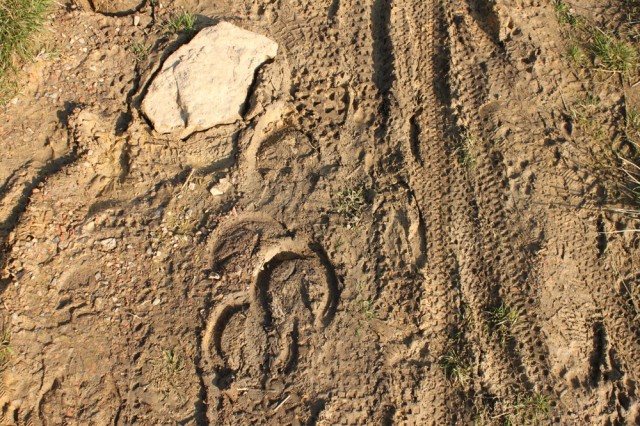I had a top tip from the Watershed’s archaeologist , Gavin Edwards, that there was clay to be found on Baildon Moor. I need clay from a genuine Watershed source because clay from elsewhere, “outsider” clay, just feels wrong. Having set the agenda for the use of “locally sourced” material: for discussion on identity, belonging, relationship of object and people to place etc I am overjoyed to discover there is clay to be dug, transferred from one part to another….So armed with a trowel and a map, I set off, feeling self consciously like a geo thief. Though with my letter of permission in my back pocket just in case……
Baildon Moor. Sure enough the ground was heavy with soft , sticky , golden (yellow ochre? ) clay, almost pure in parts. It gave up its position in the earth with a struggle, fighting the trowel (unfortunately a builders trowel not the gardening variety). I came away with what I thought was a small rucksackfull , but later realised much of my haul was peppered with stones and the clay itself was really quite precious.
Well, this clay is destined for the other side of The Watershed area- I ought to roll it all the way back , collecting stones and debris along the way – that would mirror the journey of a glacier more accurately- but I have a car- and anyway , that performance has been done, a few years ago, with someone rolling themselves through the streets of South London (sorry I can’t remember who/why/when- I’ll do some research)!

